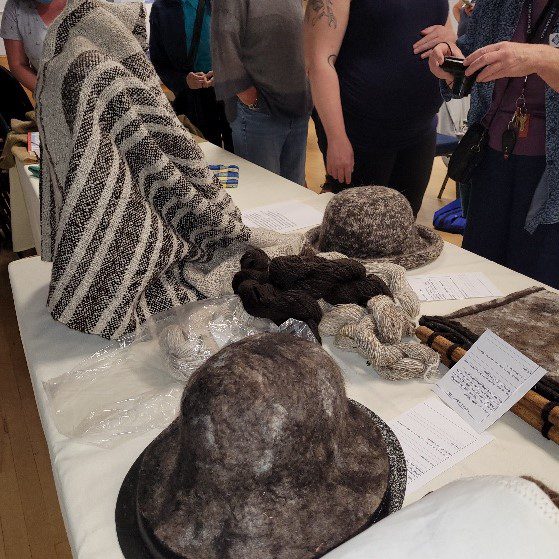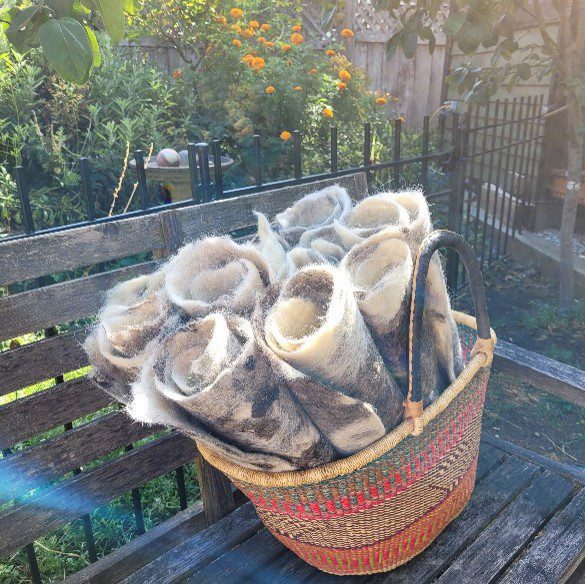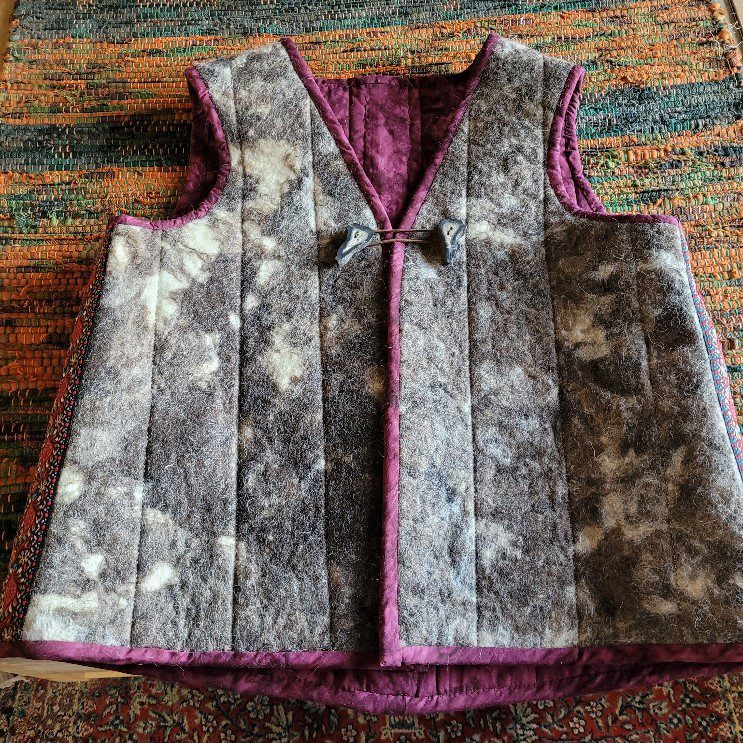No part of a sheep’s fleece needs to be waste. The dirty bits when it’s first sheared make great garden mulch. Then you can comb or card the best parts for spinning into yarn. And then, if you are Bobbie, you’ll use the leftover carding and combing waste to make beautiful wet-felted panels!
by Bobbie Williams
The technique of wet-felting from wool has existed a long time, and some evidence suggests it predates weaving and other fibre crafts. Some wool just cries out to be felted, while other breeds are not so friendly to the craft. Amongst the easy-to-felt wools are Corriedale, Icelandic, Cheviot, Jacob, and Romney – and you can do a Google search to find others. We have representatives of these breeds within our Fibreshed.
I was lucky enough to have a lot of Icelandic wool left over from combing and carding for spinning from an earlier project. In fact, since I started with almost a dozen fleeces from a farm in East Sooke (southern Vancouver Island), I ended up with several bags of “discard wool”. I ran the contents of the bags through my picker, sorting according to colour and whether both Tog and Thel were present. For those not familiar with Icelandic, it is a dual-coat breed – the sheep have soft undercoat – the Thel – and a coarser colourful outer coat – the Tog.

One of my first projects was a hat for the farmer, which she has told me she wore repeatedly over the winter! I made another hat for myself, and a small tote. But I still had A LOT of wool left.
Consequently, with a vague idea of making felt fabric, I wet-felted panels that I rolled up and put aside for a time when inspiration hit me. The panels had one side with a mixture of Tog and Thel, and the other side predominantly Thel.

This year I found my inspiration. As a member of the Victoria Handweavers’ and Spinners’ Guild, I decided to sew a garment from the felt panels as a contribution to the guild’s 90th Anniversary Garment Challenge. I had basic sewing skills from making items like shirts, but this would be something different. The panels were thicker than commercial fabric, and seams were going to be a challenge. Plus, felt fabric has no “give”, so I had to incorporate a lot of ease into the design.
Adapting the Hermia vest pattern from a designer in Sooke – Meeshiemoo Co – that I was already familiar with, I cut out the front and back pieces. I created seams by overlapping the fabric at the side and shoulder edges and double-stitching for strength.

I lined the vest with some batik cotton in my stash, and then quilted it.
I made toggles out of Icelandic ram horns and used them as the front attachment.
Stitching is a combination of machine and hand work.
This was a fun project, and I loved the fact that I am using all the wool from the fleeces. I am already planning some additional felted garments using Vancouver Island Fibreshed fleeces.
